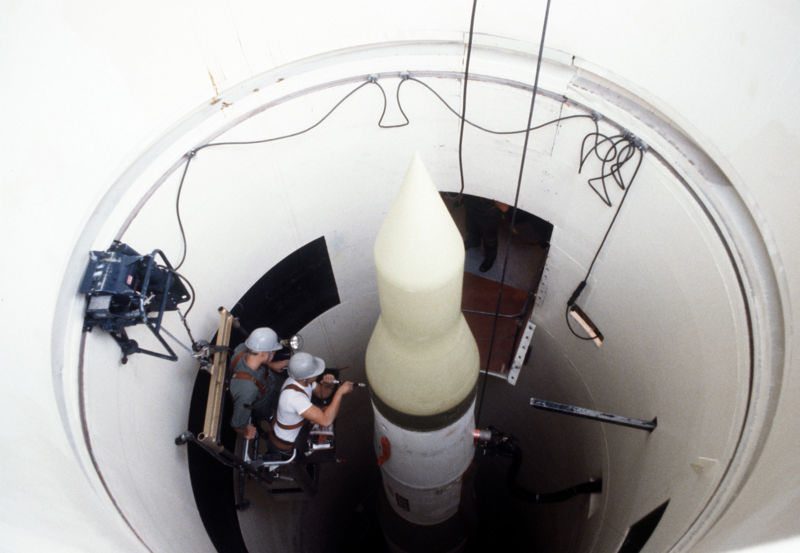Defense Secretary Leon E. Panetta met with German Defense Minister Thomas De Maizière at the Pentagon today, as Defense Department officials announced details of planned changes in the U.S. military presence in Europe.
The Army will inactivate its Germany-based 170th and 172nd infantry brigades this year and in fiscal 2014, respectively, officials announced, as part of a change that will cut U.S. service members in Europe from about 80,000 now to about 70,000 in 2017.
“The minister understands the necessity of the shifts we are making as we work to implement our new defense strategy while meeting our fiscal responsibilities,” Panetta said during a press briefing with his German counterpart.
The secretary said he and De Maizière had a productive meeting today, as they had earlier this month in both Brussels and Munich where both attended NATO defense meetings and the annual Munich Security Conference.
Panetta thanked De Maizière for his leadership both in NATO deliberations and in his nation’s “very steadfast” support to the alliance-led International Security Assistance Force in Afghanistan.
“Germany has been with us from the very beginning,” the secretary said. “The German military plays a very important role as the lead for ISAF Regional Command North.”
Germany is both a top troop contributor for ISAF and a top funding contributor for Afghan security force sustainment, he noted.
The German people have shown great commitment through a decade of war in Afghanistan, Panetta said. He offered his condolences to the families of the 50 German service members killed in combat there.
“Thousands of German troops are fighting courageously alongside U.S., coalition and Afghan forces,” he said. “They’ve worked to establish security in Mazar-e Sharif and Herat, and they continue to keep the pressure on the enemy.”
De Maizière took a lead role in bringing together fellow NATO defense ministers in reaffirming support for the Afghanistan commitments the nations’ leaders made at a summit in Lisbon, Portugal, in 2010, Panetta said.
“We have joined in the commitment of ‘in together, out together’ … and I’m grateful for that, and I’m particularly grateful for his leadership in helping us achieve that common path,” he said.
Turning to adjustments in European basing, the secretary noted some 40,000 U.S. troops will remain in Germany after the two heavy brigades depart. He added those forces will continue to train with partner nations’ forces and maintain a high state of readiness for future international operations.
“I am very grateful, as are all American people, for the very warm hospitality U.S. troops and their families enjoy in Germany,” he said. “Germany has been an incredible host.”
Panetta noted along with forces stationed in Europe, the Defense Department is planning rotational troop training deployments to augment multinational training opportunities.
De Maizière, speaking through an interpreter, said he cannot object to the United States modernizing and reshaping its forces, as his own nation is making the same effort with its military.
Panetta has been “transparent from the very beginning” about the planned changes to U.S. forces in Europe, De Maizière noted, and added American troops, family members and civilians in remaining U.S. military organizations will “always be welcome in Germany.”
The two heavy brigades the Army will inactivate in Germany have not been modernized, and disbanding them will save the Army money as it prepares to reduce its ranks by 70,000 soldiers, a senior defense official speaking on background told reporters today.
Other U.S. troop adjustments in Europe include the inactivation of V Corps Headquarters in Wiesbaden, Germany; the move of U.S. Army Europe Headquarters from Heidelberg, Germany, to Wiesbaden; the inactivation of the Air Force’s 81st Fighter Squadron at Spangdahlem Air Base, Germany; and inactivation of the 603rd Air Control Squadron at Aviano Air Base, Italy. The Army will also relocate elements of the 173rd Airborne Brigade Combat Team from locations in Germany to the brigade’s long-planned consolidated location in Vicenza, Italy.
Forces that will remain in Europe include the 2nd Stryker Cavalry Regiment at Vilseck, Germany, and the 173rd at Vicenza. A senior defense official today called those modernized units two of the Army’s “cutting-edge” troop formations.
De Maizière noted “high-value” U.S. units are remaining in Germany.
“I believe the impact [of the units leaving] will be moderate,” he said. “Germany will remain the country where the bulk of U.S. troops will remain stationed, and this underscores that Germany is a strategically valuable … location for our American friends.”
Joseph Garvey, a senior U.S. Army Europe official, told American Forces Press Service USAREUR’s commander, Lt. Gen. Mark P. Hertling, has visited communities across Germany in recent weeks to address troop and family concerns about the pending moves.
Hertling assured Army families their leaders in Europe will do everything possible to limit upheaval for soldiers, family members and civilians, Garvey said.
The general also told troops and families leaders will work to ensure those affected by the moves are treated with dignity and respect as the Army in Europe works through this transition, Garvey added.











